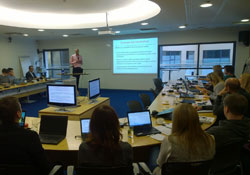Integrated environment and health impact assessment in Estonia: the tools of the trade

WHO
Powerful tools for assessing the health impact of policies and projects are becoming widely available. Multi-pathways models, spatial structures, geographical and temporal patterns of the environment-health nexus can nowadays be analysed at various levels of detail with the help of freely available online resources and software packages.
Integration of multiple health effects and impacts is essential, as public health authorities and advocates need to understand and predict the health implications of policies, plans and projects, in order to engage in multi-sectoral work. Holistic assessments, based on realistic assumptions, need to combine quantitative and qualitative information.
To present some of the currently available tools for integrated environment and health impact assessment, on 27-28 October 2016 a workshop was organized by WHO/Europe in collaboration with the Estonian Health Boardin Tallinn. Building on previous collaboration at the national level, the workshop consisted of sessions on strategies and methods for carrying out the assessments and hands-on practicals on the use of different assessment software, such as RStudio, QGIS, AirQ+ and others.
Attended by 20 participants from health and other sectors, and facilitated by international experts from Utrecht University, the Swiss Tropical and Public Health Institute and the University of Bath, the workshop offered an insight into simple and complex assessment models, suitable for the needs and technical proficiency of different types of users.



